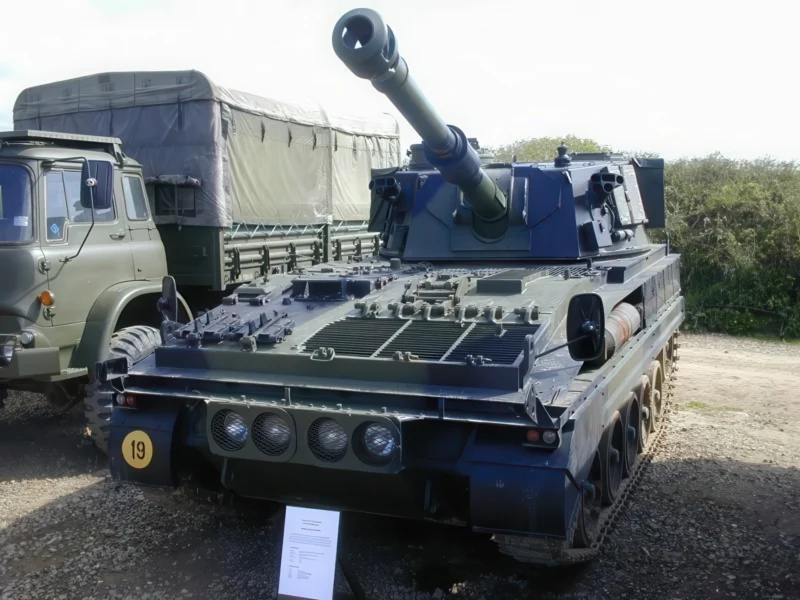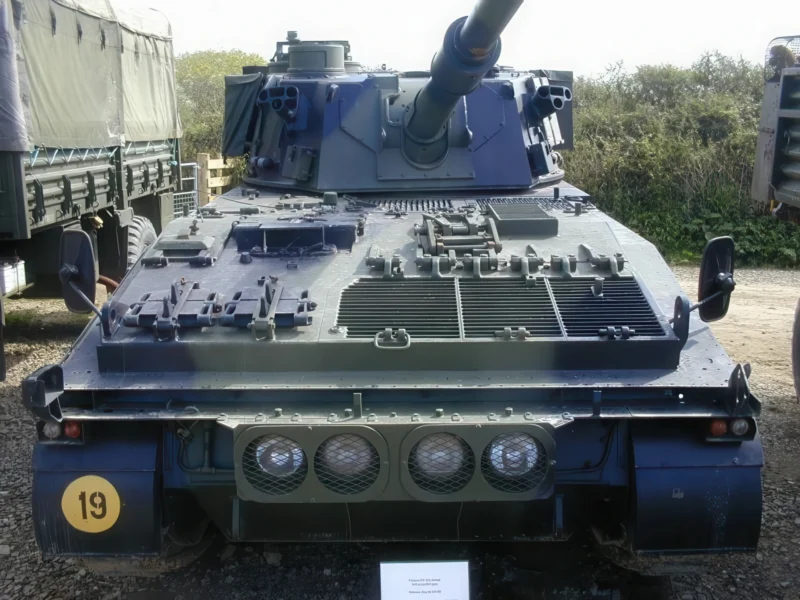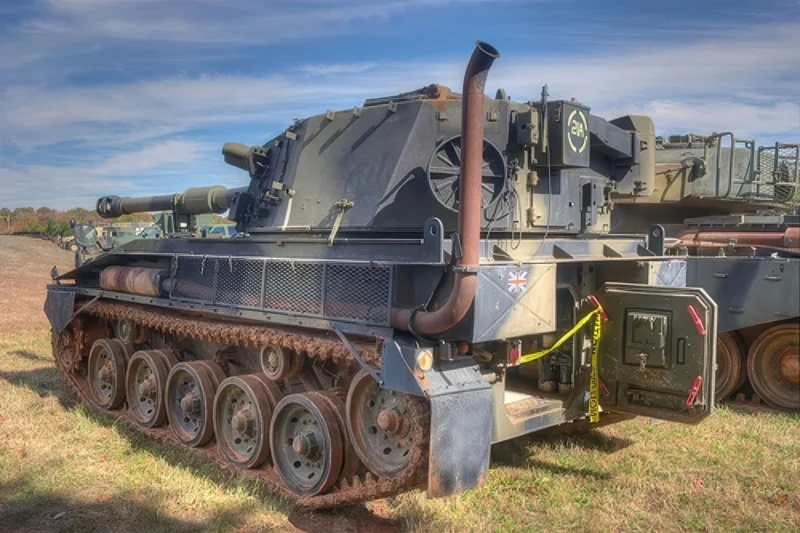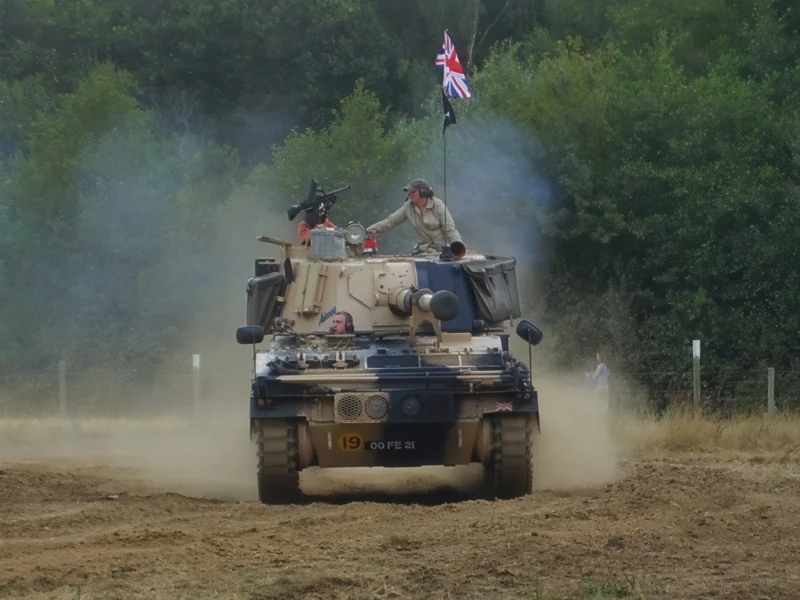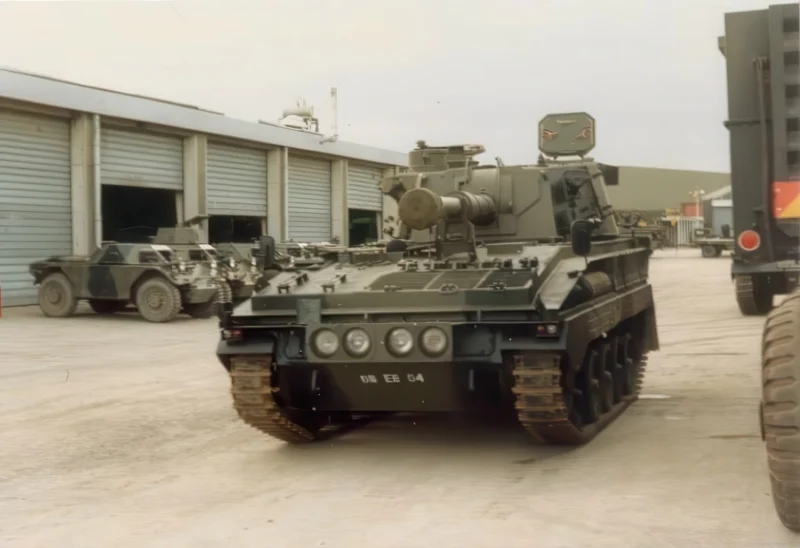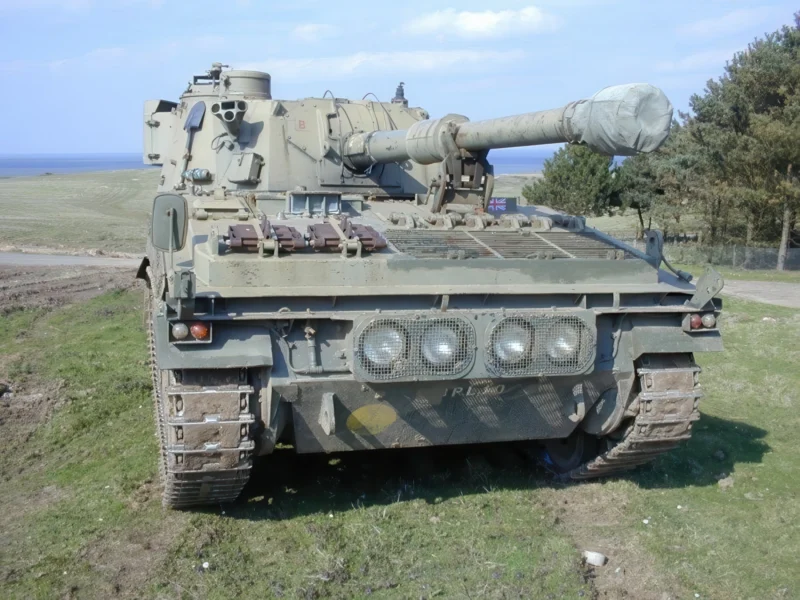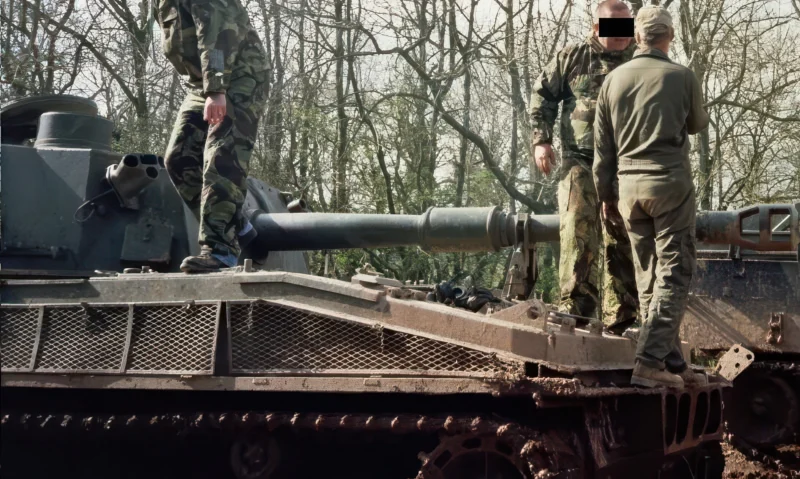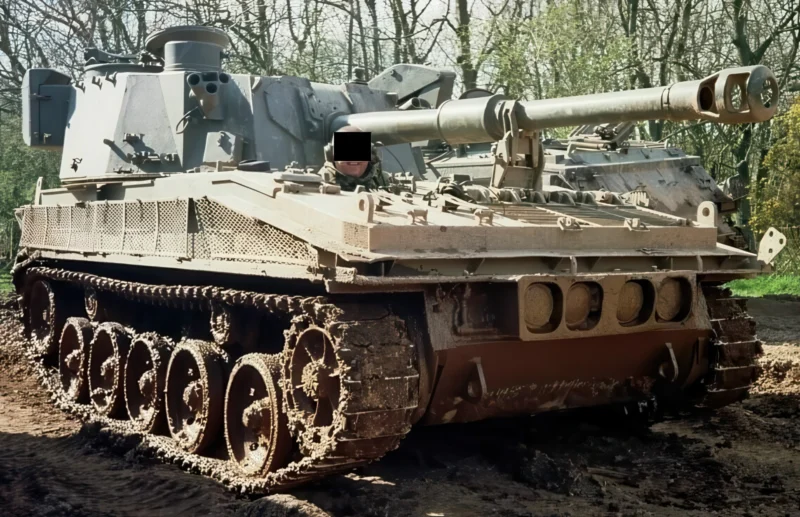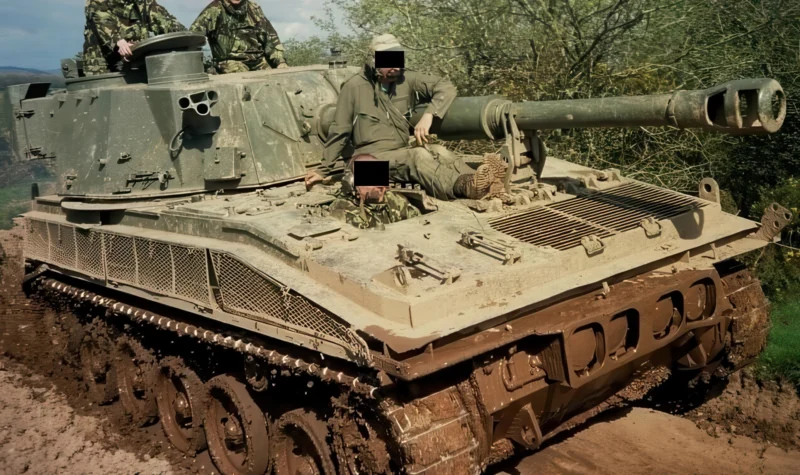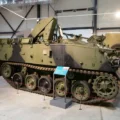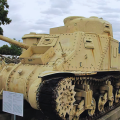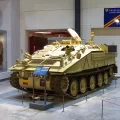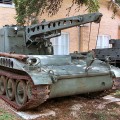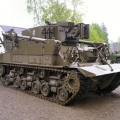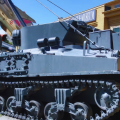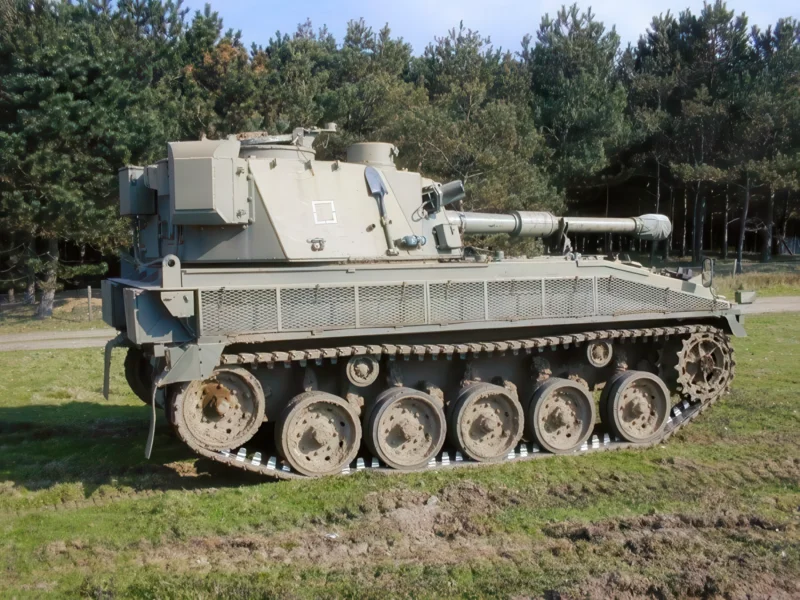
FV433 | |
| Paese | Regno unito |
| digitare | Artiglieria semovente |
| In servizio | 1965–2016 |
| Costruito | 234 |
FV433, 105mm, Field Artillery, Self-Propelled “Abbot” is the self-propelled artillery, or more specifically self-propelled gun (SPG), variant of the British Army FV430 series of armoured fighting vehicles (AFVs), using much of the chassis of the FV430 but with a fully rotating turret at the rear housing the 105 mm gun and given the vehicle designation of FV433.
fonte: FV433 on Wiki
| Self-propelled Abbot FV 433 Photos | |
|---|---|
| Fotografi | Inconsapevole |
| Localizzazione | Inconsapevole |
| Foto | 31 |

Vedi anche:
The FV433, officially designated the “Gun Equipment 105mm L109 (Abbot),” is a self-propelled artillery piece developed for the British Army during the Cold War. It was the self-propelled gun (SPG) variant of the FV430 series of armored fighting vehicles, sharing many components with the widely used FV432 Armoured Personnel Carrier. The Abbot was designed to replace older, World War II-era SPGs like the Sexton.
Design and Armament
- Chassis and Mobility: The FV433 is built on a modified FV430 chassis, but with a different power pack configuration. It is a tracked vehicle with excellent off-road mobility, and was also equipped with a flotation screen that allowed it to be amphibious.
- Motore: The vehicle is powered by a Rolls-Royce K60 multi-fuel opposed-piston engine that produces 240 horsepower, giving it a top speed of around 29 mph (47 km/h).
- Armamento principale: The primary weapon is a 105 mm L13A1 gun housed in a fully rotating turret at the rear of the vehicle. This gun was specifically developed for the Abbot and used a new family of ammunition, which was electrically primed and had a longer, more lethal projectile compared to American 105mm ammunition. The gun had a maximum range of up to 17 km (10.75 miles) and a high rate of fire, capable of firing 6 to 8 rounds per minute.
- Protezione: The FV433’s armor is relatively thin, consisting of welded steel that is primarily designed to protect the crew from small arms fire and shell splinters, as it was not intended for direct combat.
Storia operativa
The FV433 Abbot entered service with the British Army in 1965, continuing the British tradition of naming self-propelled artillery after ecclesiastical titles (like the Sexton, Bishop, and Priest). It was a key component of the Royal Artillery regiments in the British Army of the Rhine (BAOR) and saw service for several decades. It was eventually replaced by the AS90 self-propelled howitzer in the 1990s. In addition to the British Army, the Abbot was also used by the Indian Army.
Punti di vista : 1
